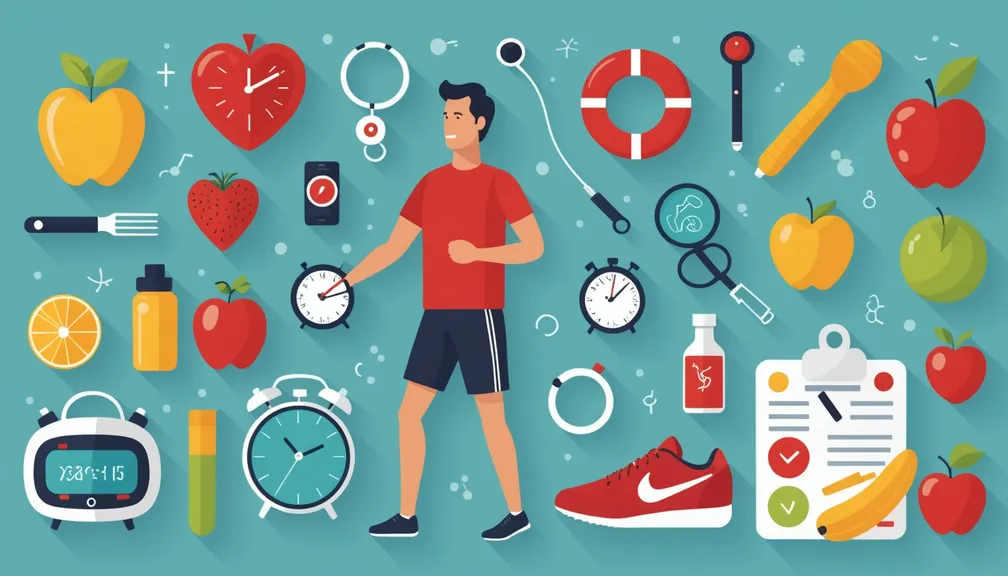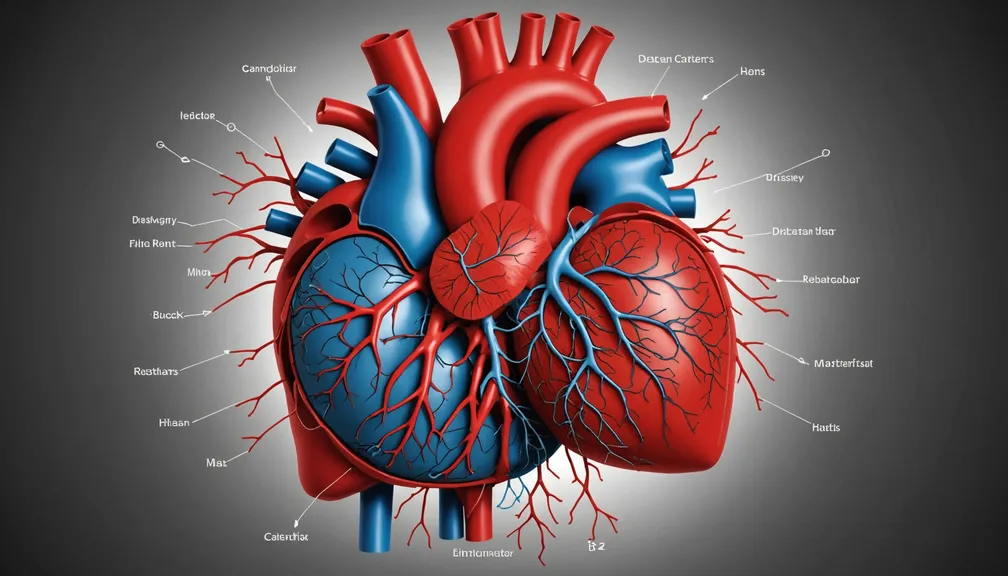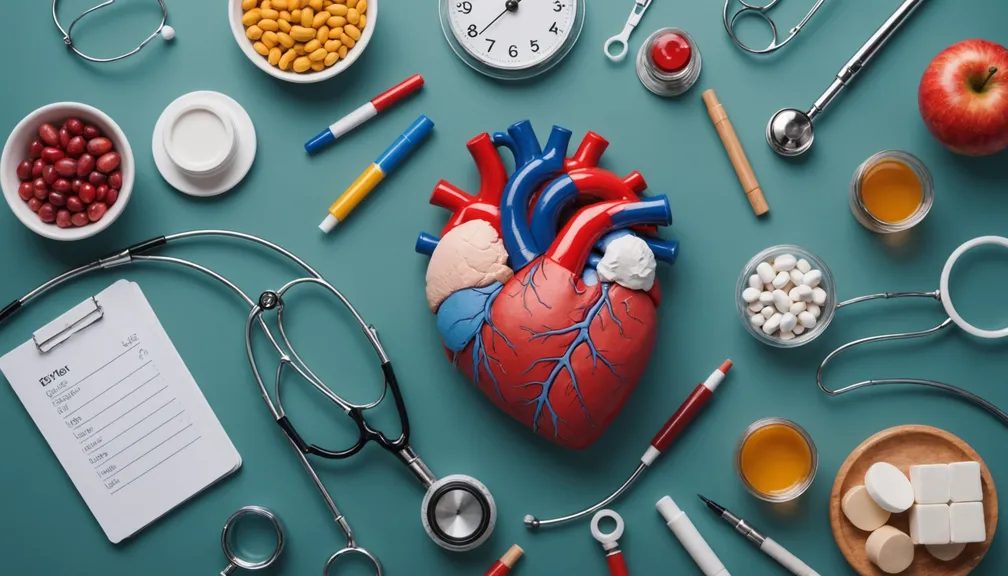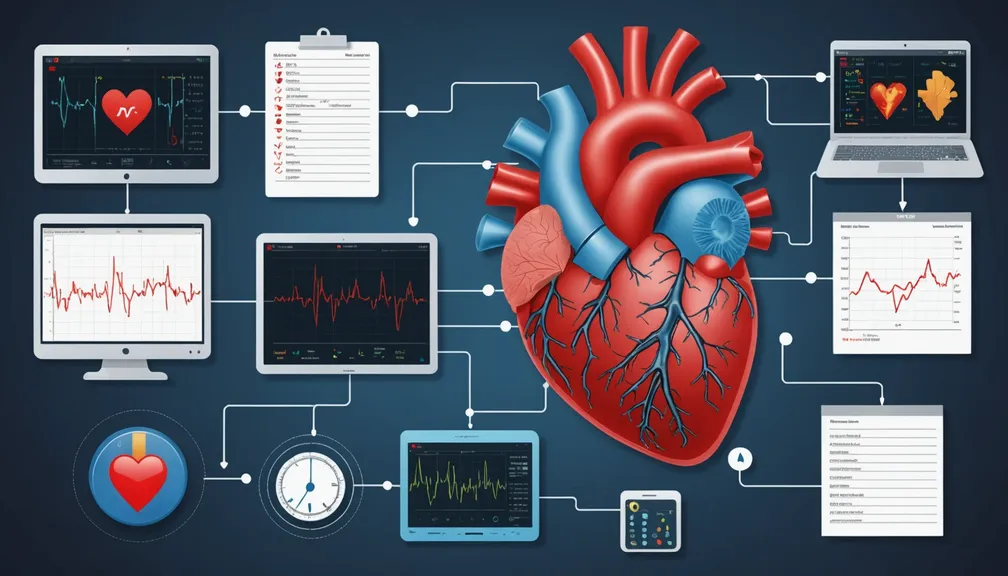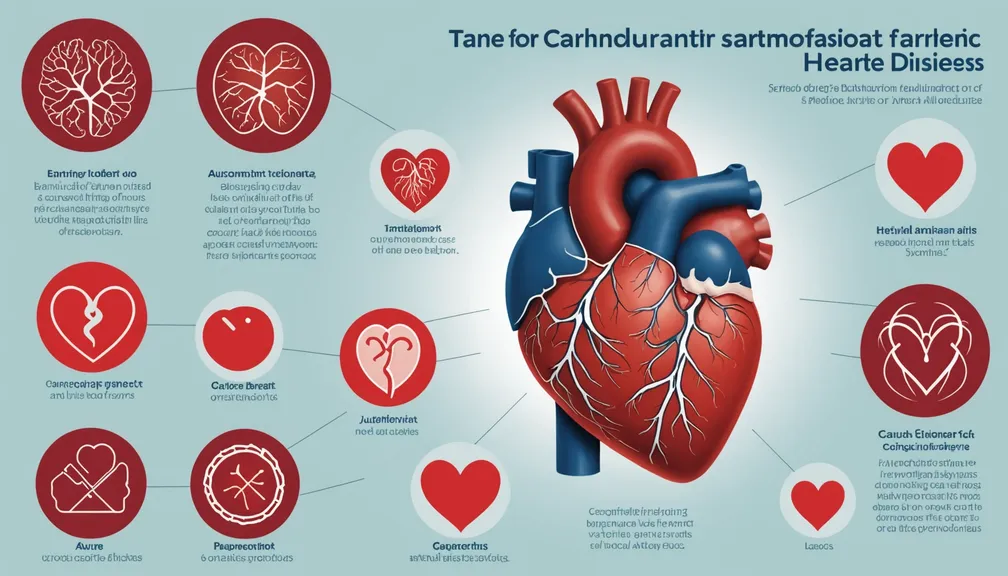Lifestyle Changes: Diet, Exercise, and Monitoring
Managing a rare cardiovascular disease involves adopting specific lifestyle changes to support your heart health. This lesson provides comprehensive guidance on diet, exercise, and monitoring to help you and your loved ones navigate this journey effectively.
Diet
A heart-healthy diet plays a crucial role in managing rare cardiovascular diseases. Making informed food choices can help control symptoms, prevent complications, and improve overall well-being.
1. Emphasize a Heart-Healthy Diet
- Balanced Nutrition: Ensure your diet includes a variety of nutrients essential for heart health.
- Caloric Intake: Maintain a healthy weight by balancing the calories you consume with those you burn.
2. Foods to Include
- Fruits and Vegetables:
- Benefits: Rich in vitamins, minerals, and antioxidants.
-
Examples: Berries, leafy greens, citrus fruits, and cruciferous vegetables like broccoli and cauliflower.
-
Whole Grains:
- Benefits: Provide fiber, which helps in lowering cholesterol levels.
-
Examples: Brown rice, quinoa, whole wheat bread, and oatmeal.
-
Lean Proteins:
- Benefits: Essential for muscle repair and overall body function without excessive saturated fats.
-
Examples: Skinless poultry, fish (especially fatty fish like salmon and mackerel), beans, lentils, and tofu.
-
Healthy Fats:
- Benefits: Support cell growth and protect organs.
- Examples: Avocados, nuts, seeds, and olive oil.
3. Foods to Limit or Avoid
- Saturated and Trans Fats:
- Why to Avoid: Increase bad cholesterol (LDL) levels, leading to plaque buildup in arteries.
-
Sources: Fried foods, baked goods, fatty cuts of meat, and processed snacks.
-
Salt (Sodium):
- Why to Limit: High sodium intake can raise blood pressure, stressing the heart.
-
Sources: Processed foods, canned soups, and salty snacks.
-
Added Sugars:
- Why to Limit: Contribute to weight gain and increased risk of heart disease.
-
Sources: Sodas, candies, pastries, and sweetened beverages.
-
Excessive Alcohol:
- Why to Avoid: Can lead to high blood pressure, heart failure, and interfere with medications.
- Recommendation: Limit intake to moderate levels as advised by your healthcare provider.
4. Tips for Meal Planning
- Portion Control:
- Use smaller plates to help manage portion sizes.
-
Be mindful of serving sizes listed on food labels.
-
Read Labels:
- Check for hidden sodium and sugars.
-
Choose products labeled “low sodium” or “no added sugar” when possible.
-
Cook at Home:
-
Preparing meals at home allows better control over ingredients and cooking methods.
-
Stay Hydrated:
- Aim for at least 8 glasses of water daily.
- Limit sugary drinks and excessive caffeine.
Exercise
Regular physical activity strengthens the heart, improves circulation, and enhances overall physical and mental health. Tailoring your exercise routine to your specific condition is essential.
1. Benefits of Regular Physical Activity
- Heart Health: Strengthens the heart muscle, improving its efficiency.
- Weight Management: Helps maintain a healthy weight, reducing strain on the heart.
- Mood Enhancement: Releases endorphins that improve mood and reduce stress.
- Energy Levels: Increases overall energy and reduces fatigue.
2. Types of Exercise Suitable for Patients
- Aerobic Exercises:
- Examples: Walking, cycling, swimming, and dancing.
-
Benefits: Enhances cardiovascular endurance and burns calories.
-
Strength Training:
- Examples: Using resistance bands, light weights, or body-weight exercises like squats and push-ups.
-
Benefits: Builds muscle mass, supports joint health, and boosts metabolism.
-
Flexibility Exercises:
- Examples: Stretching routines, yoga, and Pilates.
-
Benefits: Improves range of motion, reduces stiffness, and prevents injuries.
-
Balance Activities:
- Examples: Tai chi, balance-focused yoga poses, and using balance boards.
- Benefits: Enhances stability, reduces the risk of falls, and supports overall mobility.
3. Creating a Safe Exercise Routine
- Consult Your Doctor:
-
Before starting any exercise program, discuss your plans with your healthcare provider to ensure it's safe for your specific condition.
-
Start Slowly:
-
Begin with low-intensity activities and gradually increase the duration and intensity as your fitness improves.
-
Set Realistic Goals:
-
Establish achievable milestones to stay motivated and track progress.
-
Listen to Your Body:
- Pay attention to how you feel during and after exercise. Rest if you experience pain, dizziness, or excessive fatigue.
4. Precautions to Take
- Avoid Overexertion:
-
Do not push yourself beyond comfortable limits. Excessive exercise can strain the heart.
-
Stay Hydrated:
-
Drink water before, during, and after workouts to prevent dehydration.
-
Warm-Up and Cool Down:
-
Spend 5-10 minutes warming up before exercising and cooling down afterward to prepare your body and aid recovery.
-
Monitor Your Heart Rate:
- Keep track of your heart rate to ensure you're exercising within a safe range, as advised by your healthcare provider.
Monitoring
Regular monitoring allows for early detection of changes in your condition, ensuring timely intervention and effective management.
1. Importance of Regular Monitoring
- Early Detection: Identifies potential complications before they become severe.
- Assessment of Treatment: Helps evaluate the effectiveness of medications and lifestyle changes.
- Informed Decisions: Provides data for healthcare providers to tailor treatment plans.
2. What to Monitor
- Symptoms:
- Examples: Chest pain, shortness of breath, palpitations, dizziness, fatigue, and swelling in limbs.
-
Action: Report any new or worsening symptoms to your healthcare provider immediately.
-
Vital Signs:
- Blood Pressure: High blood pressure can strain the heart and arteries.
- Heart Rate: Abnormal heart rates may indicate underlying issues.
-
Weight: Sudden weight gain can signal fluid retention or other health problems.
-
Medication Side Effects:
- Why to Monitor: Some medications can have adverse effects that need to be addressed promptly.
- Action: Keep a list of any side effects and discuss them with your doctor.
3. Tools and Devices for Self-Monitoring
- Blood Pressure Monitors:
-
Use: Track your blood pressure regularly at home to manage hypertension.
-
Wearable Heart Monitors:
-
Use: Detect irregular heart rhythms and provide continuous heart rate data.
-
Fitness Trackers:
- Use: Monitor physical activity levels, steps taken, and heart rate during exercise.
4. Keeping a Health Diary
- What to Record:
-
Daily symptoms, medication intake, vital signs, physical activity, and dietary habits.
-
Benefits:
- Provides a comprehensive overview of your health trends.
-
Aids healthcare providers in making informed treatment decisions.
-
How to Maintain:
- Use a notebook or digital app to log your information consistently.
- Review the diary regularly to identify patterns or triggers.
5. When to Seek Medical Attention
- Sudden Changes:
-
Immediate medical help if you experience severe chest pain, difficulty breathing, or sudden weakness.
-
Missed Medications:
-
Contact your healthcare provider if you miss doses or have concerns about your medication regimen.
-
Persistent Symptoms:
- Ongoing issues, such as chronic fatigue or frequent palpitations, should be discussed with your doctor.
Things to Avoid
Avoiding certain habits and behaviors can significantly improve heart health and prevent complications associated with rare cardiovascular diseases.
1. Smoking
- Why to Avoid:
-
Damages blood vessels, increases heart rate and blood pressure, and reduces oxygen supply to the heart.
-
Action Steps:
- Seek support programs or medications to help quit smoking.
- Avoid environments with secondhand smoke.
2. Excessive Alcohol Consumption
- Why to Avoid:
-
Can lead to high blood pressure, heart failure, and interfere with medications.
-
Action Steps:
- Limit alcohol intake to the recommended levels or abstain as advised by your healthcare provider.
3. High-Sodium Foods
- Why to Avoid:
-
Increases blood pressure and can lead to fluid retention.
-
Action Steps:
- Choose low-sodium alternatives and flavor foods with herbs and spices instead of salt.
4. Stress
- Why to Avoid:
-
Chronic stress can negatively impact heart health, leading to hypertension and other issues.
-
Action Steps:
-
Practice stress-reduction techniques such as meditation, deep breathing exercises, or engaging in hobbies.
-
Seek Support:
- Consider counseling or support groups if stress becomes overwhelming.
5. Ignoring Symptoms
- Why to Avoid:
-
Overlooking symptoms can lead to delayed treatment and worsening of the condition.
-
Action Steps:
- Be proactive in reporting any new or worsening symptoms to your healthcare provider immediately.
Healthcare Professionals to Consult
Collaborating with a team of healthcare professionals ensures comprehensive management of your rare cardiovascular disease.
1. Cardiologist
- Role: Specialist in diagnosing and treating heart and blood vessel conditions.
- Services: Provides advanced care, performs specialized tests, and manages complex treatments.
2. Nutritionist/Dietitian
- Role: Expert in food and nutrition who helps design meal plans tailored to your health needs.
- Services: Provides guidance on dietary choices, portion sizes, and strategies to maintain a balanced diet.
3. Physical Therapist
- Role: Helps develop safe and effective exercise programs to improve physical strength and mobility.
- Services: Assists in rehabilitation and ensures exercises are performed correctly to avoid injury.
4. Primary Care Physician
- Role: Manages overall health and coordinates care among specialists.
- Services: Conducts regular check-ups, manages medications, and addresses general health concerns.
5. Mental Health Professionals
- Role: Supports emotional and psychological well-being.
- Services: Provides counseling, therapy, and coping strategies to manage stress, anxiety, or depression related to living with a rare disease.
Adopting these lifestyle changes can significantly improve your quality of life and help manage rare cardiovascular diseases effectively. Always consult with your healthcare team before making any significant changes to your diet or exercise routines.

